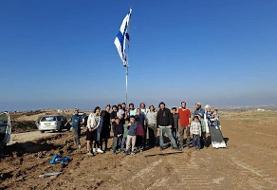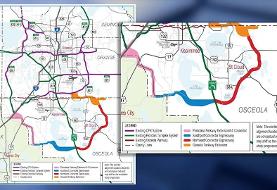Accounting Tablet Found in Iran's Ancient Burn City from 5000 Years Ago
Culture and Society Blog, Kodoom.com
An Elamite clay tablet was discovered within the Burnt City by a team of Iranian, Italian, and Serbian archeologists.

The finding of such [clay] tablets is not unusual in Iran’s western areas, but leading Iranian archaeologist Seyyed-Mansour Seyyed-Sajjadi stated on Thursday that archaeologists had never made such a unique discovery in the easternmost point of the Lut Plain and southeastern Iran.
“It is the first time that such an important clay tablet that is an accounting record has been discovered in Shahr-e Sukhteh since 50 years ago when the site underwent archaeological excavation for the first time,” said Seyyed-Sajjadi who leads the current excavation on Burnt City.
Sajjadi points out that the tablet proves Elamites used a decimal (base 10) accounting system, in contrast to Sumerians and Babylonians who used a sexagesimal (base 60) number system
Called “Shahr-e Sukhteh” in Persian, the UNESCO-registered Burnt City is associated with four rounds of civilization, all mysteriously burnt down by catastrophic sets of fire. It is situated in Sistan-Baluchestan province, which was once a junction of Bronze-Age trade routes crossing the semi-arid plateau.
Founded around 3200 BC, Burnt City was populated during four main periods up to 1800 BC. Previous rounds of excavations showed that its residents had great skills in weaving, creating fine arts such as decorative objects, stone carving, and pottery painting.
Situated in a region inside the modern-day provinces of Ilam and Khuzestan, Elam was one of the most impressive civilizations of the ancient world. It was never a cohesive ethnic kingdom or polity but rather a federation of different tribes governed at various times by cities such as Susa, Anshan, and Shimashki until it was united during the Middle Elamite Period, briefly, as an empire.
The name Elam was given to the region by others – the Akkadians and Sumerians of Mesopotamia – and is thought to be their version of what the Elamites called themselves – Haltami (or Haltamti) – meaning “those of the high country”. 'Elam', therefore, is usually translated to mean “highlands” or “high country” as it was comprised of settlements on the Iranian Plateau that stretched from the southern plains to the elevations of the Zagros Mountains.
Elamite language, extinct language spoken by the Elamites in the ancient country of Elam, which included the region from the Mesopotamian plain to the Iranian Plateau. According to Britannica, Elamite documents from three historical periods have been found. The earliest Elamite writings are in a figurative or pictographic script and date from the middle of the 3rd millennium BC.
Related to History:
- The Nomadic Journey of a Bakhtiari Family According to the Smithsonian Magazine
- Iran in Pictures: 1921
- Arch of Ctesiphon, Ancient Persian Architectural Masterpiece Collapses near Baghdad
- Video: Compare Words in Ancient Iranian (Avestan) and Indo-European Languages
- A Historical Blunder: Trump Claims 1775 Revolutionary Army 'took over airports'!
- Persian Physician's Book Was Translated, Taught and Cherished in Ireland Centuries Ago
- In Pictures: Tehran Museums, A Treasure Trove of Iranian Culture and History
- Iran Now A Powerhouse in Volleyball: U19 Team Tops FIVB Global Ranking for the First Time Ever
- Archaeologists Find Evidence Noah’s Ark Landed in Northern Iran
- 2500 Year Old Persian Palace Excavated in Northern Turkey
- Film Shows Isfahan and Tehran some 61 years Ago
- Legal victory for Iranians and World Heritage: US Judge Orders Return of Ancient Achaemenid Relief to Iran
- In Pictures: Millions celebrate Chaharshanbeh Soori fire Festival in Iran
- The Prince and the Shah: A Rare Glimpse into 19th Century Iran
- US Supreme Court blocks seizure of ancient Persian artifacts


















































